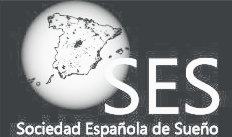High D-dimer levels after stopping anticoagulants in pulmonary embolism with sleep apnoea.
García Suquia A, Alonso-Fernández A, de la Peña M, Romero D, Piérola J, Carrera M, Barceló A, Soriano JB, Arque M, Fernández-Capitán C, Lorenzo AGarcía-Río F. Eur Respir J. 2015 Dec;46(6):1691-700. Epub 2015 Jul 23.
Obstructive sleep apnoea is a risk factor for pulmonary embolism. Elevated D-dimer levels and other biomarkers are associated with recurrent pulmonary embolism. The objectives were to compare the frequency of elevated D-dimer levels (>500 ng•mL(-1)) and further coagulation biomarkers after oral anticoagulation withdrawal in pulmonary embolism patients, with and without obstructive sleep apnoea, including two control groups without pulmonary embolism.We performed home respiratory polygraphy. We also measured basic biochemical profile and haemogram, and coagulation biomarkers (D-dimer, prothrombin fragment 1+2, thrombin-antithrombin complex, plasminogen activator inhibitor 1, and soluble P-selectin).64 (74.4%) of the pulmonary embolism cases and 41 (46.11%) of the controls without pulmonary embolism had obstructive sleep apnoea. Plasmatic D-dimer was higher in PE patients with OSA than in those without obstructive sleep apnoea. D-dimer levels were significantly correlated with apnoea-hypopnoea index, and nocturnal hypoxia. There were more patients with high D-dimer after stopping anticoagulants in those with pulmonary embolism and obstructive sleep apnoea compared with PE without obstructive sleep apnoea (35.4% versus 19.0%, p=0.003). Apnoea-hypopnoea index was independently associated with high D-dimer.Pulmonary embolism patients with obstructive sleep apnoea had higher rates of elevated D-dimer levels after anticoagulation discontinuation for pulmonary embolism than in patients without obstructive sleep apnoea and, therefore, higher procoagulant state that might increase the risk of pulmonary embolism recurrence.
Ventana Científica. Diciembre 2015. Artículo 64
High D-dimer levels after stopping anticoagulants in pulmonary embolism with sleep apnoea.


